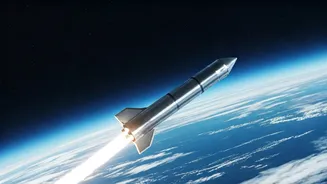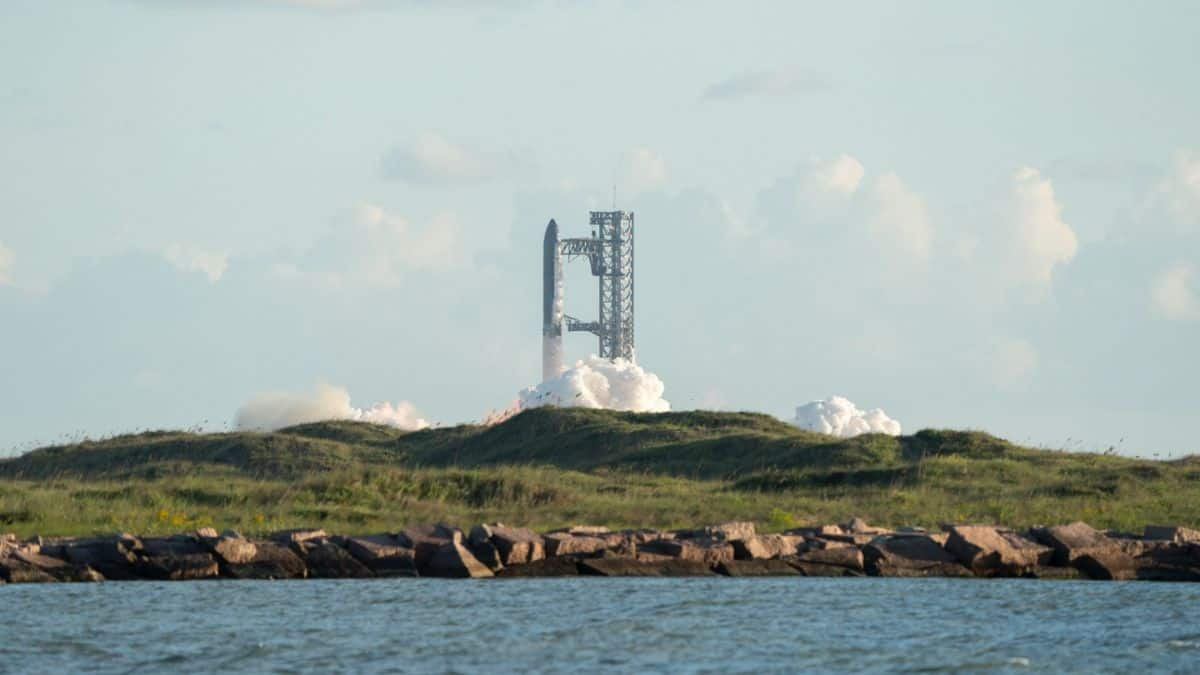Starship's Impressive Flight
On a recent Monday, SpaceX's Starship Super Heavy rocket embarked on its 11th flight test, a clear demonstration of its commitment to complete reusability.
The launch occurred from SpaceX's Starbase in Texas, at 6:30 pm CT (23:20 GMT). This ambitious endeavor highlighted the ongoing efforts to refine and perfect the Starship system for both satellite deployment and future manned missions. During its descent over the Indian Ocean, the spacecraft underwent a series of crucial tests. These tests served as practice for future landings back at the launch site. The flight lasted just over an hour. The Starship carried eight mock satellites, mimicking SpaceX's Starlink constellation. The Starship and the booster separated as part of the 'hot staging' process minutes after lift off. The booster returned for a controlled entry into the Gulf of Mexico, before crashing into the Indian Ocean.
Hot Staging and Separation
The flight's 'hot staging' process was a critical moment. The separation of the Starship from its Super Heavy booster minutes after liftoff. Shortly after the separation, the Starship's Raptor engines ignited. The Super Heavy booster then commenced its descent towards its splashdown site, preparing for a landing burn experiment. This particular test was to analyze and perfect the separation and engine ignition processes. Elon Musk, the founder and CEO of SpaceX, mentioned his intention to watch the flight test from outside Launch Control, emphasizing the visceral nature of the experience. The separation of the two stages, a complex and crucial step, was a testament to the engineering and innovation involved in the Starship project.
Booster's Liquid Power
The Super Heavy booster, the first stage of the Starship launch system, is a powerhouse of technology. Powered by 33 Raptor engines, it utilizes sub-cooled liquid methane (CH4) and liquid oxygen (LOX). The successful operation of the booster is essential for Starship's capacity to carry heavy payloads and support long-duration missions. The booster's design and engineering are major contributors to SpaceX's goals of complete reusability. This involves launching and returning the booster, aiming to lower the costs associated with space travel. During the flight test, the Super Heavy booster prepared for its landing burn experiment, indicating ongoing development towards recovering and reusing this critical component of the Starship system.
Moon, Mars and Beyond
SpaceX’s Starship and its Super Heavy rocket represent a fully reusable transportation system. It is designed to carry satellites and humans to Earth orbit, the Moon, Mars, and potentially even further into the solar system. The Starship, standing at 123 meters (403 feet) tall, is capable of transporting payloads weighing between 100 to 150 tons. This capability is essential for carrying cargo and crew for ambitious space missions. NASA is particularly interested in this because it can help it land astronauts on the moon. Elon Musk aims to use Starship to send people to Mars. The ongoing tests, like the one over the Indian Ocean, are critical for refining the techniques needed for Starship's safe and efficient operations in the challenging environments of space.
SpaceX's Achievements Noted
The latest flight test highlights SpaceX's continued advancement. In a previous test flight in August, Starship demonstrated considerable progress after facing a series of explosive failures. This recent success reinforces SpaceX's position at the forefront of space exploration. The latest test was also marked by a loud explosion. The launch and subsequent events were captured in video and shared widely, showcasing the real-time drama of the test flight. The Starship program's dedication to overcoming challenges and pushing technological boundaries highlights its significance in shaping the future of space travel.











